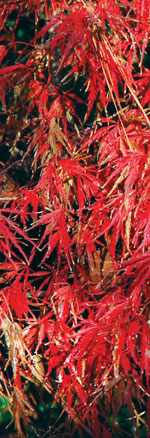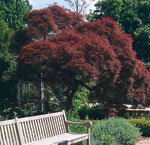Focus on Form and Foliage With Japanese Maples
go.ncsu.edu/readext?232335
en Español / em Português
El inglés es el idioma de control de esta página. En la medida en que haya algún conflicto entre la traducción al inglés y la traducción, el inglés prevalece.
Al hacer clic en el enlace de traducción se activa un servicio de traducción gratuito para convertir la página al español. Al igual que con cualquier traducción por Internet, la conversión no es sensible al contexto y puede que no traduzca el texto en su significado original. NC State Extension no garantiza la exactitud del texto traducido. Por favor, tenga en cuenta que algunas aplicaciones y/o servicios pueden no funcionar como se espera cuando se traducen.
Português
Inglês é o idioma de controle desta página. Na medida que haja algum conflito entre o texto original em Inglês e a tradução, o Inglês prevalece.
Ao clicar no link de tradução, um serviço gratuito de tradução será ativado para converter a página para o Português. Como em qualquer tradução pela internet, a conversão não é sensivel ao contexto e pode não ocorrer a tradução para o significado orginal. O serviço de Extensão da Carolina do Norte (NC State Extension) não garante a exatidão do texto traduzido. Por favor, observe que algumas funções ou serviços podem não funcionar como esperado após a tradução.
English
English is the controlling language of this page. To the extent there is any conflict between the English text and the translation, English controls.
Clicking on the translation link activates a free translation service to convert the page to Spanish. As with any Internet translation, the conversion is not context-sensitive and may not translate the text to its original meaning. NC State Extension does not guarantee the accuracy of the translated text. Please note that some applications and/or services may not function as expected when translated.
Collapse ▲
Acer palmatum
JC Raulston Arboretum ©
Japanese maples (Acer palmatum) have eye-catching appeal with colorful foliage, beautiful branching and attractive leaves. Used as shrubs or small trees, Japanese maples make great focal points for any garden.
Some cultivars display foliage that emerges purple to red in the spring, changes to green in summer’s heat and turns shades of red again in the fall. Others emerge in shades of green and remain that way until fall, when they take on shades of red. Colors can be less intense if the plants are grown in the deep shade.
Japanese maple leaf shapes add contrast in the garden. Cultivars fall mainly into two groups: Those with dissected (or finely cut) leaf margins and those with non dissected leaves (fewer “cuts” along the edges).
Japanese maples can be grown as single- or multi-stemmed specimens. Pruning can create branch structures that bring interest to a winter garden. Branches spread from the trunk in a rounded shape, with many forming layers that can provide shade to other plants. Size and rate of growth vary with the cultivar. Many dissected types, such as ‘Crimson Queen,’ reach only eight feet in height. ‘Bloodgood,’ a very popular non dissected variety, can reach a height of 15 to 20 feet. Japanese maples usually grow no more than one foot annually.

Acer palmatum
JC Raulston Arboretum ©
Hardy in the USDA Zones five through eight, Japanese maples prefer dappled light or afternoon shade. Summer heat can scorch the leaves in full sun, and exposure to drying winds can have adverse effects. Drought and heat can adversely stress these plants, but specimens planted in moist, well-drained soils will have an advantage. A two to three inch layer of pine straw or bark mulch will help keep soils moist and cool.
Japanese maples have few pest problems. Aphids may appear on new growth. Leaf spots and branch dieback can affect these trees but rarely kill them outright. Keeping maples mulched and watered will help them avoid most problems. A soil test every two to three years will tell you how much, if any, fertilizer they might need.
Whether you’re looking for a small tree or a mid-sized shrub, a Japanese maple can be an exciting focal point for your garden.


